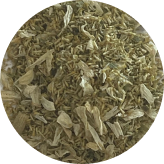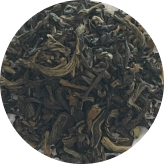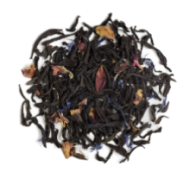Adaptogens Explained: How Himalayan Herbs Support Balance and Resilience
Adaptogens are herbs and plants traditionally used to help the body respond to stress, restore internal balance, and support long-term wellbeing — especially when consumed regularly as part of a mindful ritual.

Introduction
The word adaptogen is everywhere — on supplement labels, in wellness ads, and across tea packaging. But what does it actually mean? Are adaptogens medicine? Are they mood boosters? Or just another health trend?
At Yarsha, we believe in clarity and care. That’s why we’ve created this transparent, beginner-friendly guide to what adaptogens really are — and how they’ve been used for centuries in traditional Himalayan and Eastern systems.
Let’s explore what makes these plants unique, how they might support balance in daily life, and why they’re part of some of our most grounding blends.
What Are Adaptogens?
Adaptogens are plants, roots, or fungi that are traditionally believed to help the body adapt to stress — whether physical, emotional, or environmental. They don’t act like stimulants or sedatives. Instead, they are thought to support the body’s own systems in maintaining equilibrium over time.
To be considered an adaptogen, a plant typically:
- Has a long-standing tradition of use for stress or energy balance
- Is considered non-toxic at standard doses
- May help modulate physical responses like fatigue, focus, or mood regulation
Ancient Concept, Modern Name
Though the term “adaptogen” was coined in 1947 by a Russian scientist, the concept has deep roots in Ayurvedic, Tibetan, and Himalayan medicine.
Long before scientific terminology existed, people in high-altitude regions drank wild herbal infusions to:
- Rebuild strength after illness
- Prepare for seasonal changes or long journeys
- Center themselves before spiritual or emotional events
- Ground the body in times of grief or transition
Adaptogens were never meant to be a “fix” — they were part of life, ceremony, and daily rhythm.
🌿 Many of these same herbs still grow wild in Ilam, Nepal — where they are harvested by hand with respect for tradition and seasonality.
Examples of Traditional Adaptogen-Inspired Herbs
We don’t make medical claims — but we do honor traditional uses. Many of the herbs found in Yarsha blends have been used for generations to support energy, clarity, and resilience:
- Yarsha Gumba (Cordyceps sinensis): A rare high-altitude fungus used in Himalayan culture to support vitality and endurance. Yarsha Gumba (Cordyceps sinensis) has long been revered in Himalayan culture — and is even recognized by Mount Sinai for its potential energy-supporting properties.
- Rhododendron: Traditionally infused as a calming herbal tea
- Moringa: Known as a “miracle tree” for its nutritional profile and traditional use in nourishment
- Chamomile: A gentle herb beloved around the world for its calming and digestion-supportive properties
Many of the botanicals used in our blends — such as rhododendron and chamomile — have been part of traditional wellness practices in Eastern Nepal for generations. Academic research, including this study on Nepalese herbal medicine, documents their cultural use in supporting vitality, emotional grounding, and seasonal transitions.
These herbs may not carry clinical labels — but they’ve earned respect through centuries of experience.
How Adaptogens Fit Into a Daily Tea Ritual
Adaptogens aren’t magic pills — their benefit lies in gentle, regular use as part of a balanced lifestyle.
When consumed through tea, especially with slow, mindful preparation, adaptogenic herbs may:
- Help support calm and clarity during emotional strain
- Offer steady energy without caffeine jitters
- Create a rhythm of restoration, especially in stressful seasons
At Yarsha, we blend these herbs intentionally — not for hype, but to create functional teas that align with ancient wellness rhythms.
🧘♀️ Learn more: How to Brew the Perfect Cup of Himalayan Tea
Are Adaptogens Safe?
Most adaptogenic herbs are considered safe when consumed in moderate amounts as part of a balanced routine — especially when sourced from clean, organic environments like Ilam, Nepal.
But we always recommend:
- Talking to your doctor or qualified healthcare provider if you’re pregnant, breastfeeding, or managing a health condition
- Starting slow — 1 cup per day is a great beginning
- Listening to your body — every person’s response is different
Adaptogens are not meant to treat, diagnose, or replace professional care. They’re gentle supports — inviting your body back to balance on its own terms.
From the Mountains, For Modern Life
Adaptogens aren’t new. They’re ancient allies. In the Himalayas, these herbs have been used to meet stress with softness, fatigue with nourishment, and intensity with inner stillness.
At Yarsha, we include adaptogen-like plants in our blends not because they’re trendy — but because they’re true to the land, the culture, and the way healing has always worked in this region.
When steeped slowly and sipped with intention, these teas offer more than a moment of calm — they become a ritual of remembering your resilience.
Questions? We’ve Got You Covered
Our Organic Tea Collection
SILVER ESSENCE
Crafted from tender, silvery buds grown in Ilam, it brews pale and silky with a honey-flower whisper. Expect a clear, gentle focus and a finish that stays smooth from first to last sip.
CHAMOMILE BLISS
Crafted with chamomile, moringa, and mango leaf — a soothing blend to ease the mind and restore calm.
THE GOLDEN TEA
Made from tender tips grown on Ilam’s terraced slopes, it pours smooth with soft malt and a warm, fruit-tinged finish. It’s the everyday brew for a steady middle — comforting without heaviness.








